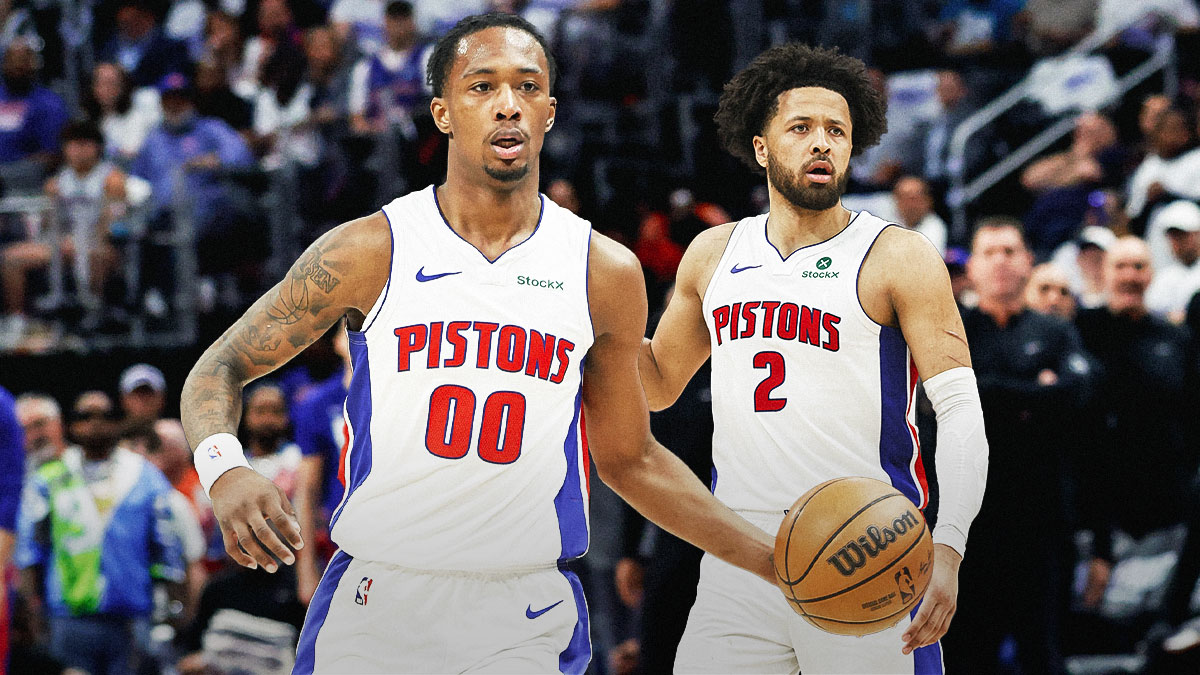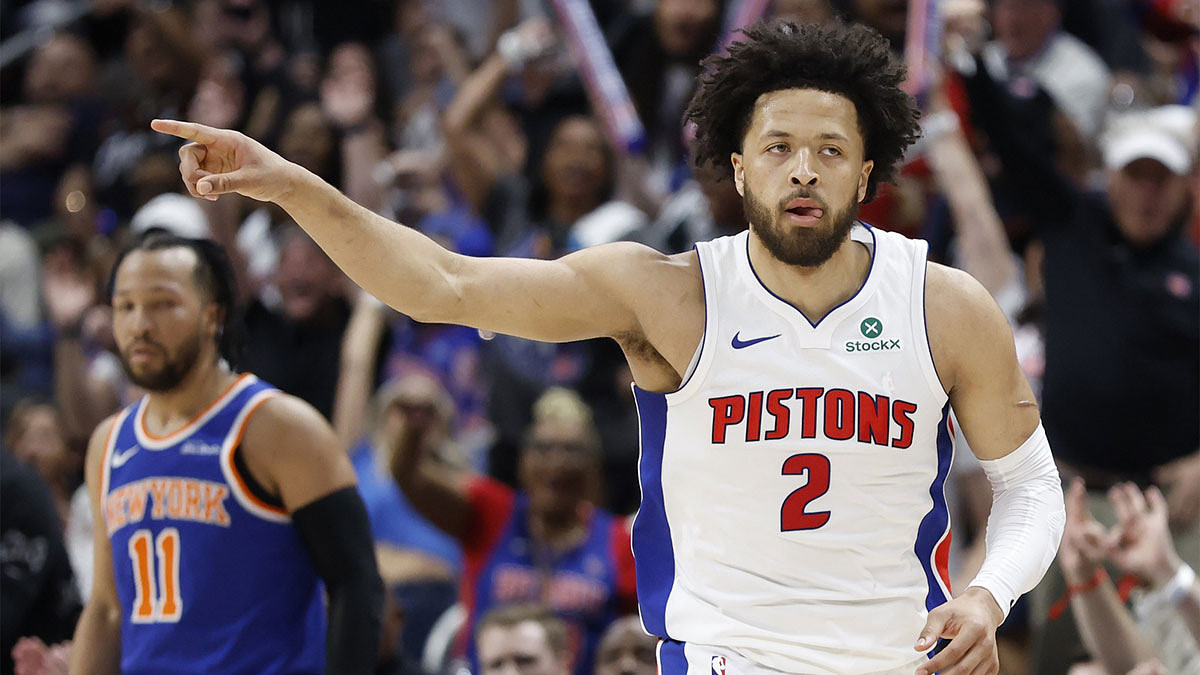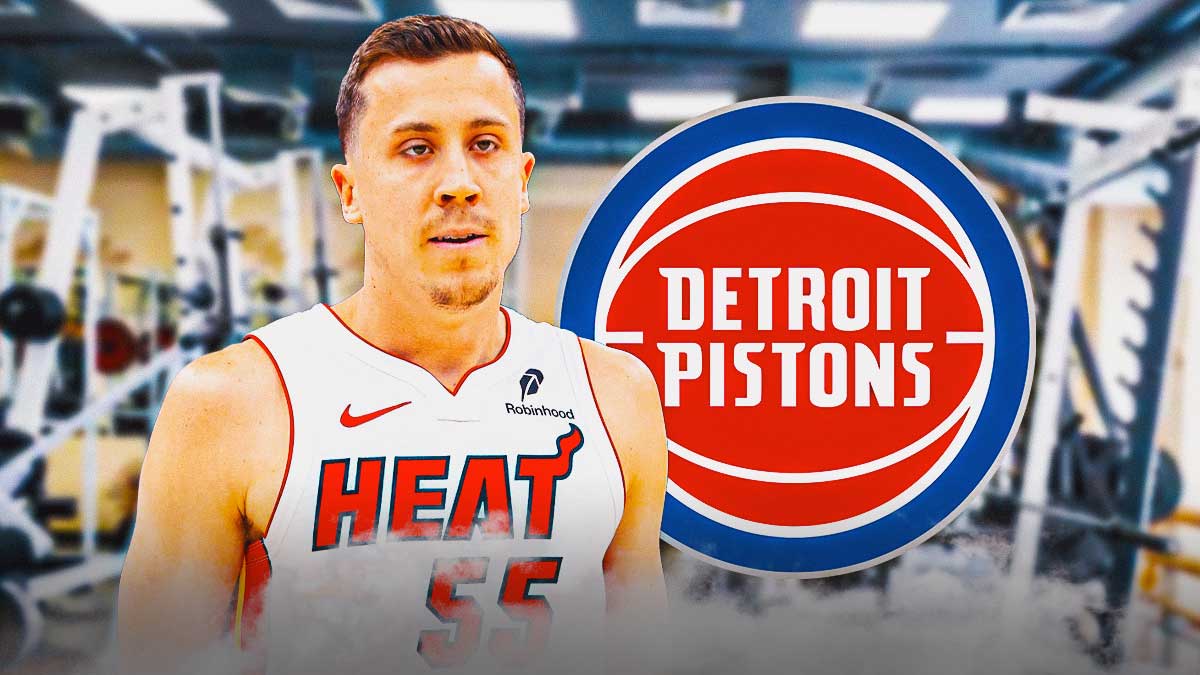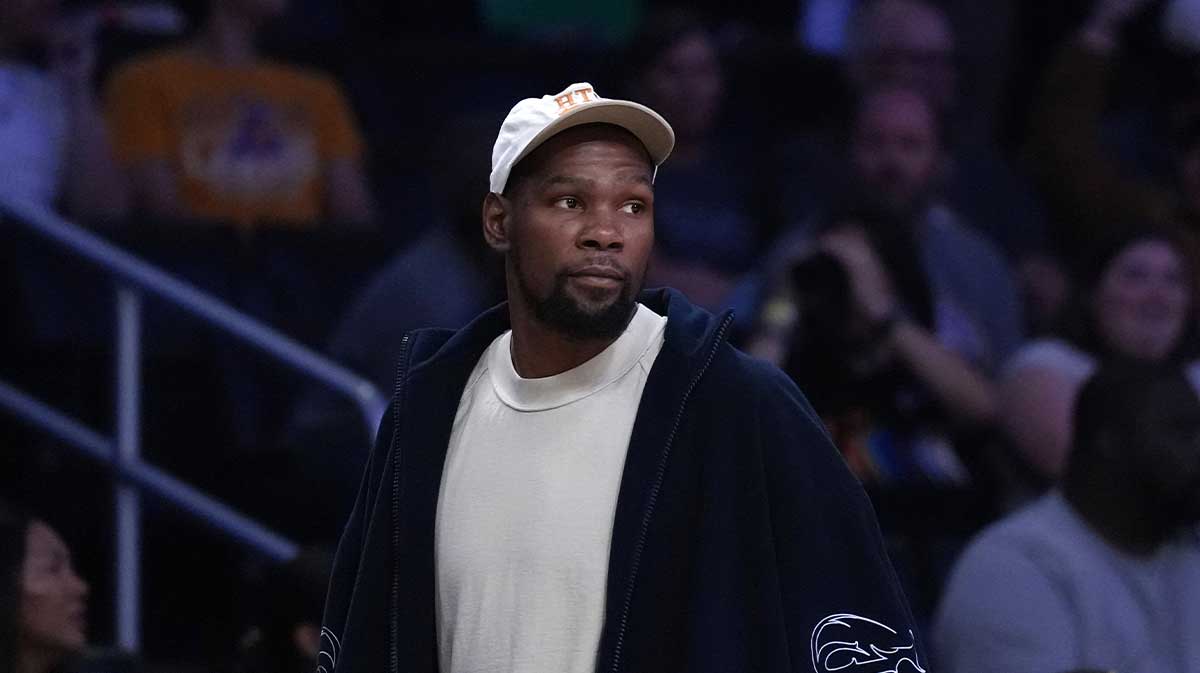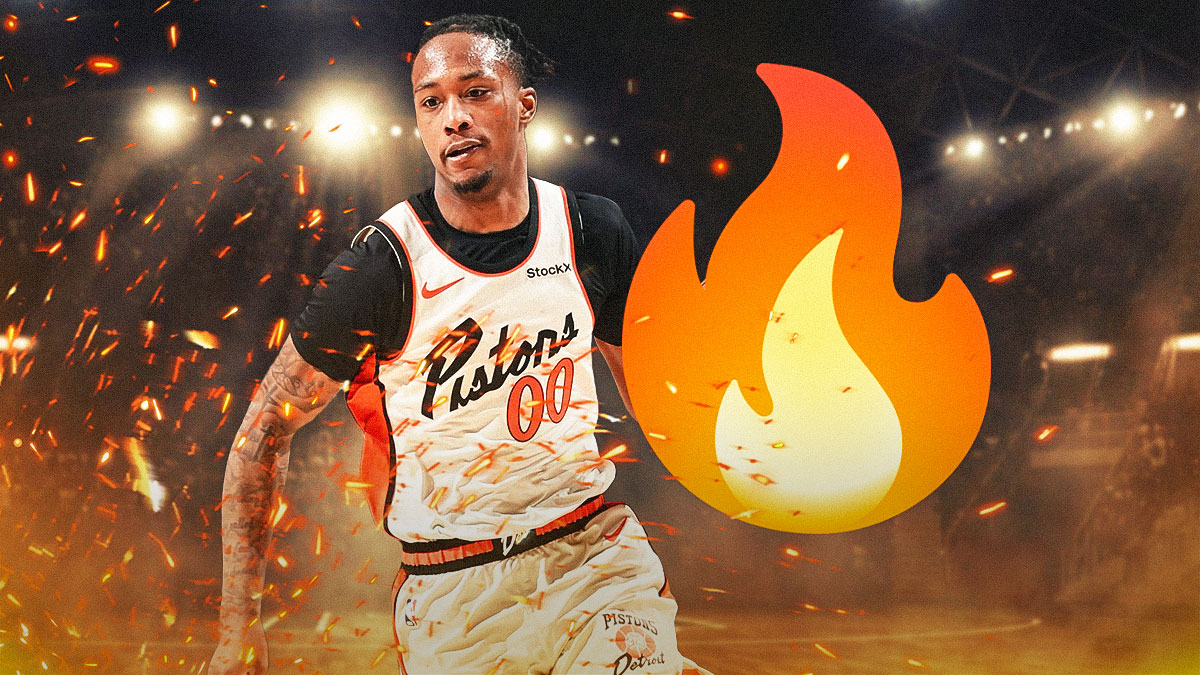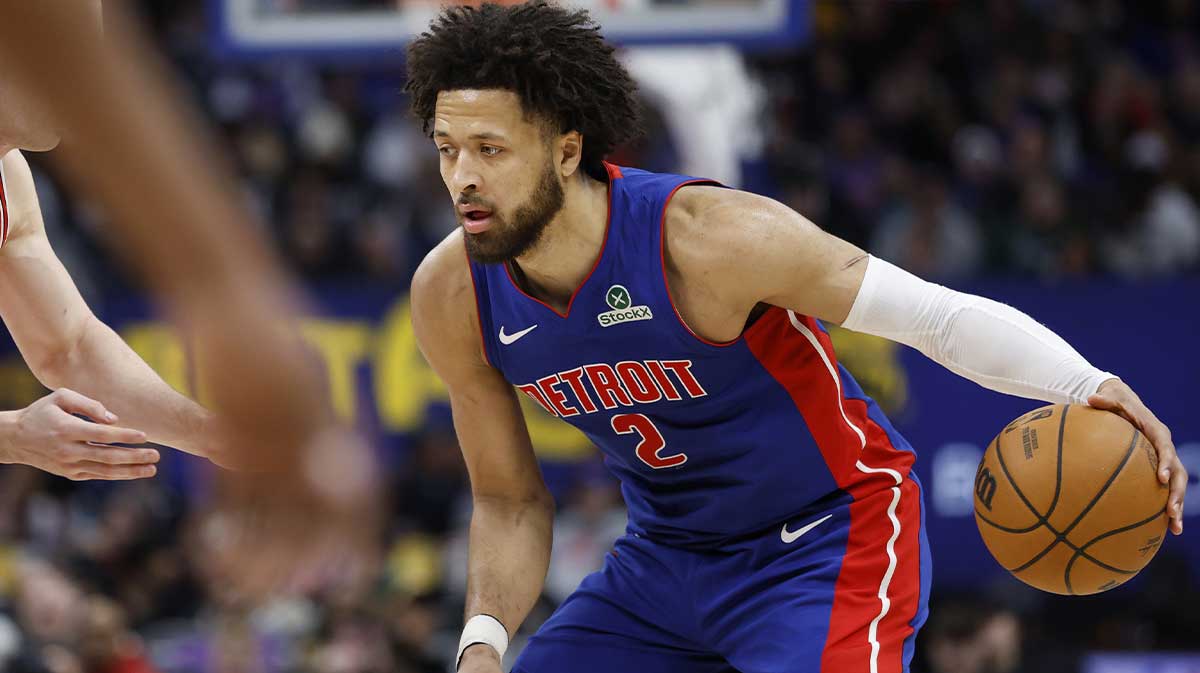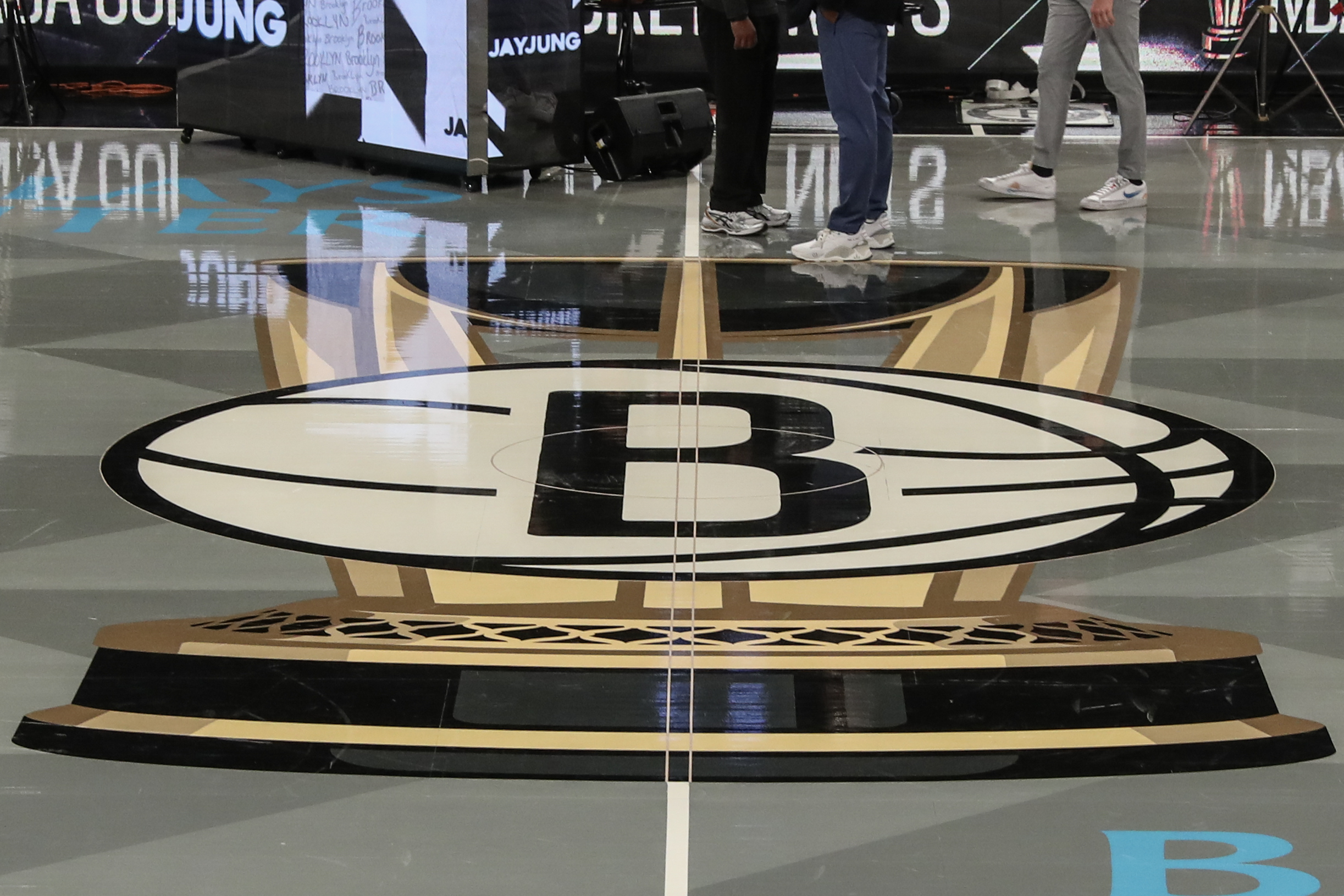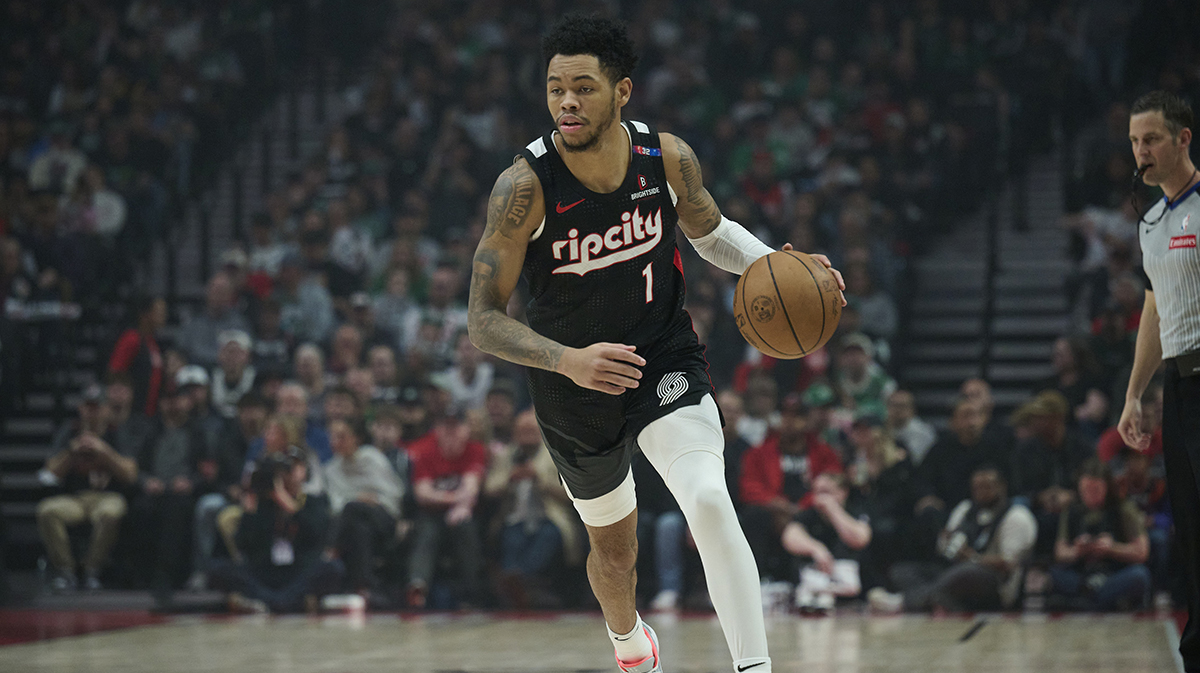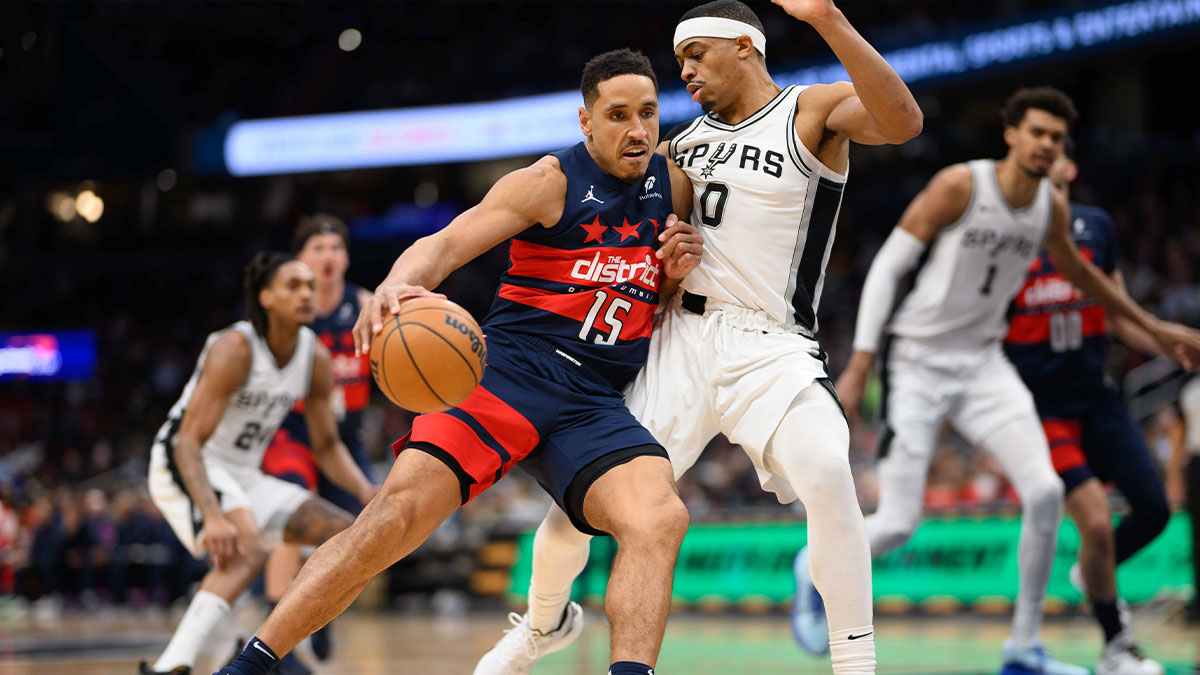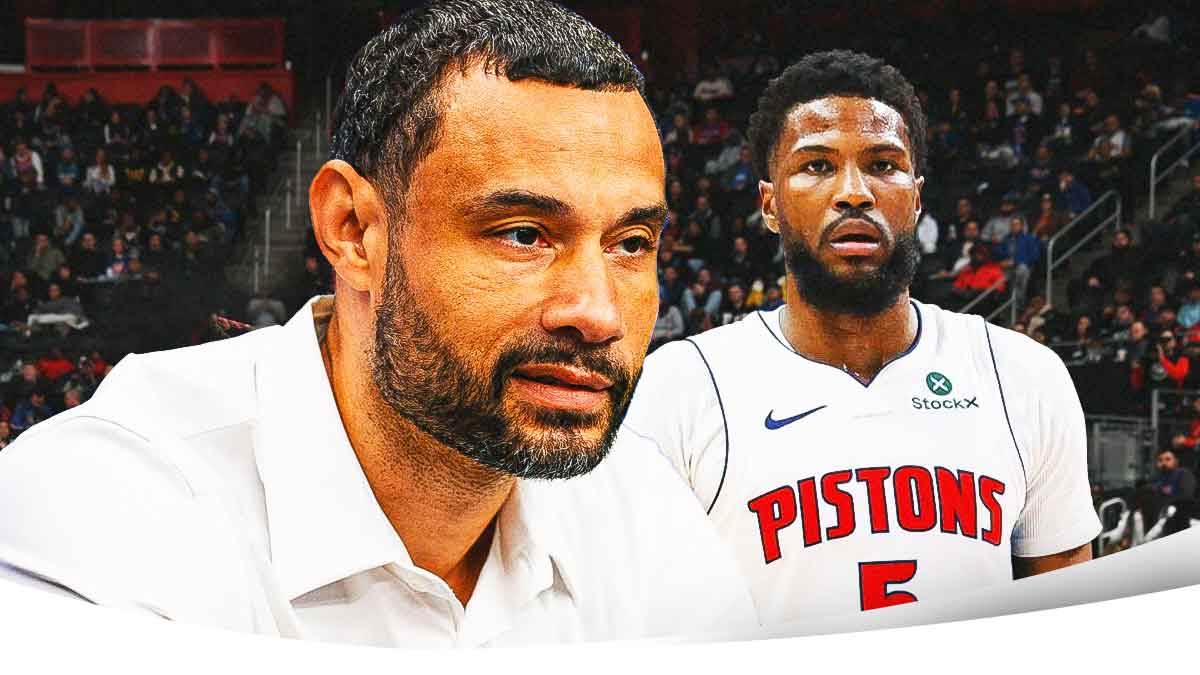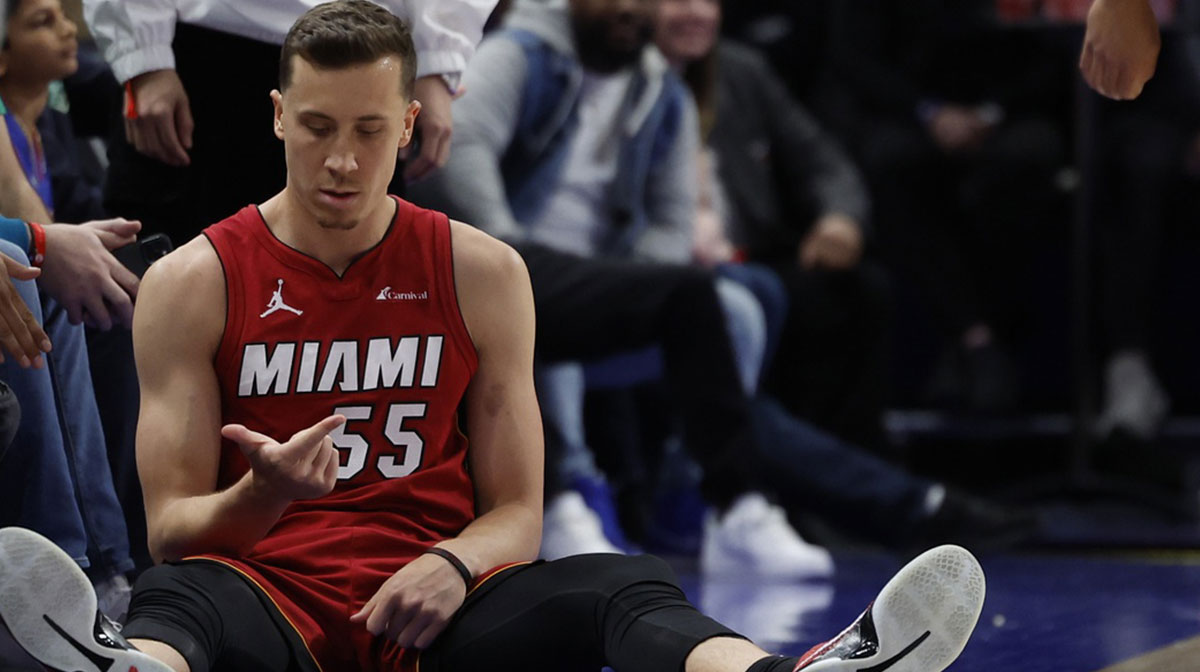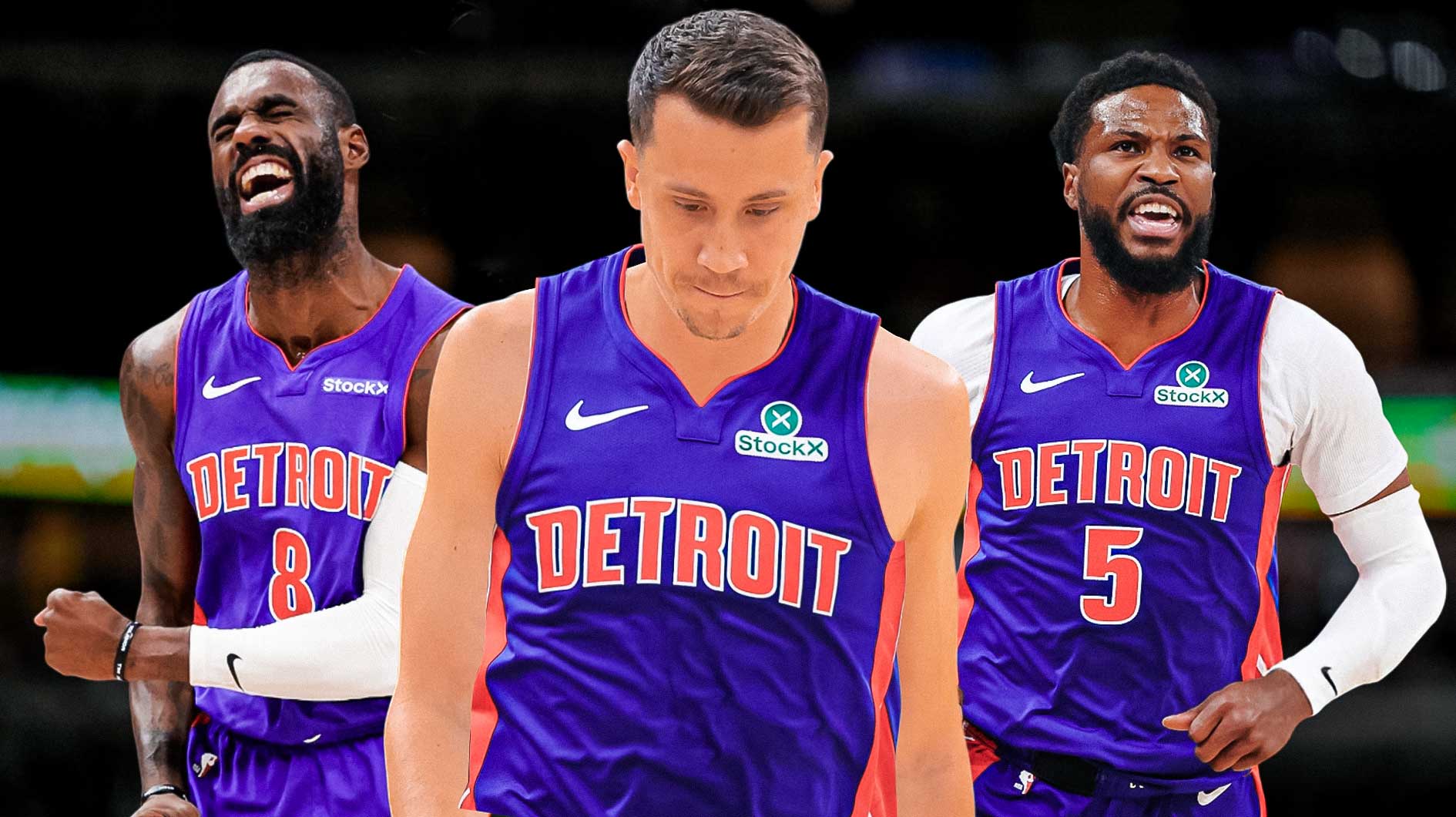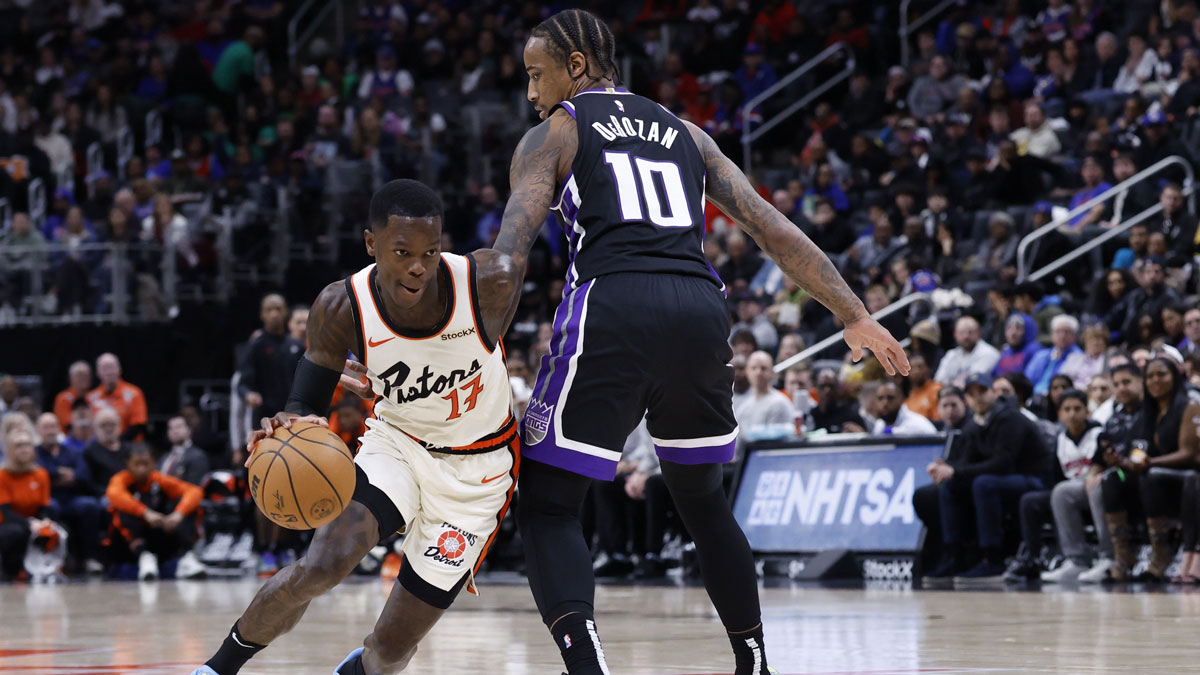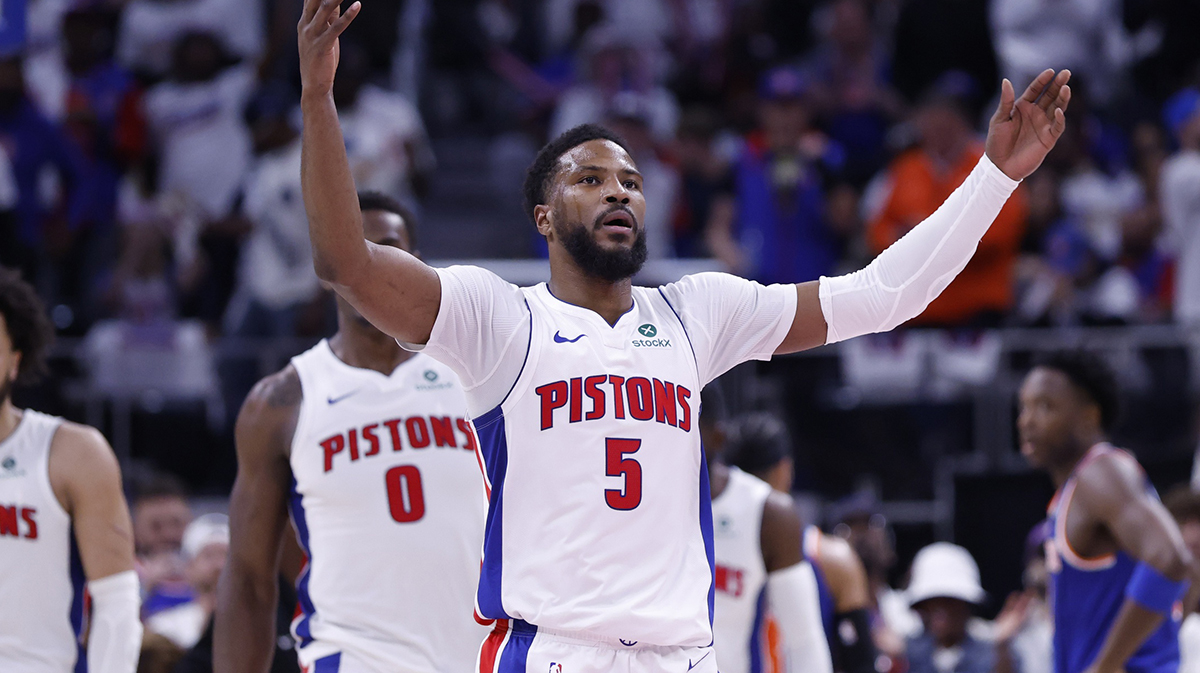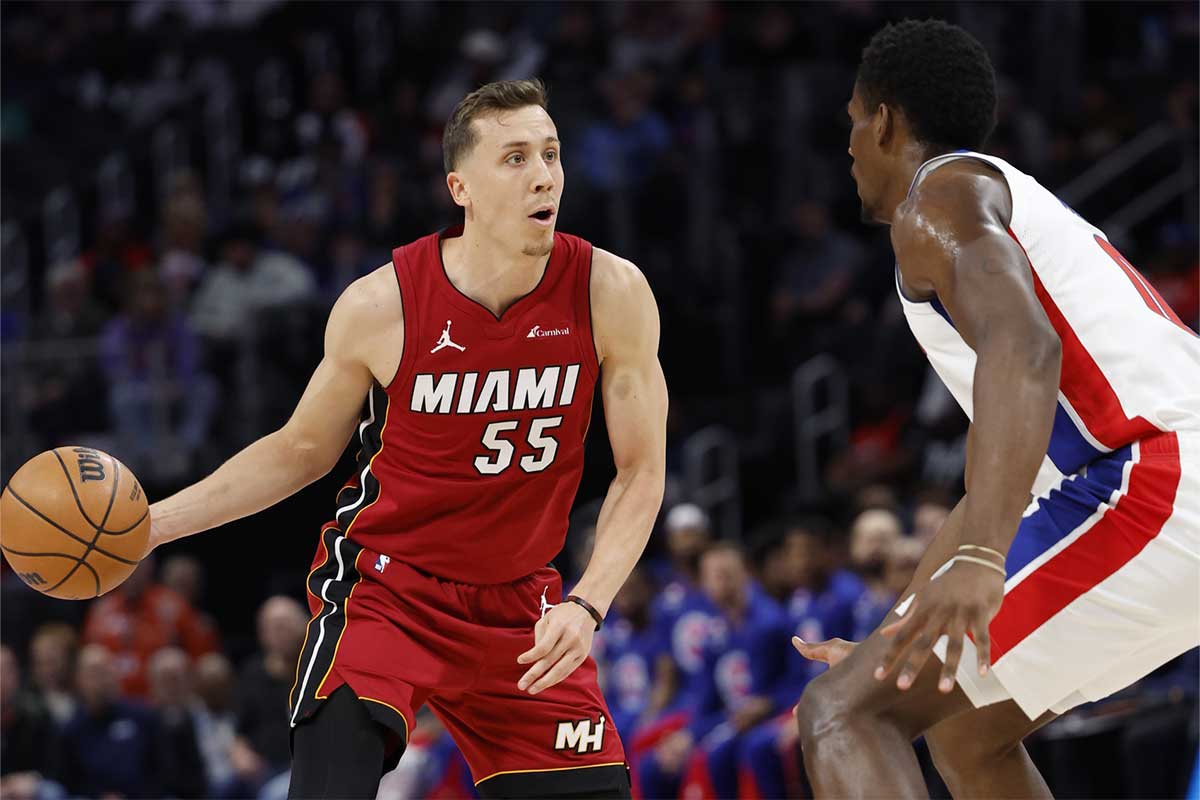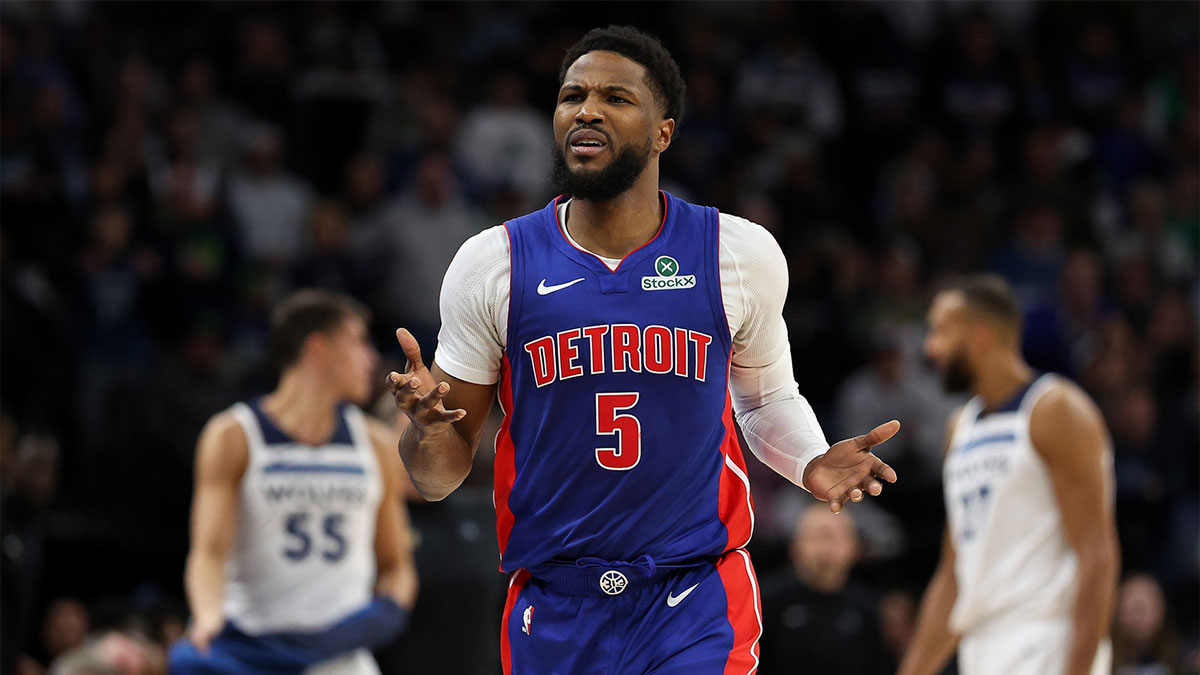Last season, the doors opened on a new era of Detroit basketball. In a literal sense, those doors belong to Little Caesers Arena, the new home of the Detroit Pistons. The change of address returning the Pistons to downtown Detroit also closed the door on nearly 30 years at the Palace of Auburn Hills.
The future of the Palace remains uncertain but is currently closed and likely to join the Boston Garden, Chicago Stadium, HemisFair Arena, Spectrum, and friends in that great sports complex in the sky.
For all its new amenities, the new arena has yet to feel like home. Though the championship banners and the rest of Detroit’s basketball history were safely transported, the crowds and one of the NBA’s most vivacious atmospheres have yet to grow into their new space.
Miles away, the walls in The Palace may now be vacant, but still house the ghosts of some of the NBA’s most raucous crowds and distinct cultures. Inside the empty arena, the memories of one of the league’s most unlikely championships still echo through the halls, whispering:
“Deeeeeeeee-troit Basketball!”

Joe Dumars and the Island of Misfit Toys
Joe Dumars on 2000s Pistons, trading for Rasheed Wallace and nearly trading for Kobe Bryant. @WojVerticalNBA Pod: https://t.co/kQdTeoeW6a pic.twitter.com/T08Sg77fNN
— Ball Don’t Lie (@Balldontlie) January 25, 2017
On Feb. 20, 2004, the Pistons landed Rasheed Wallace in a three-team trade with the Atlanta Hawks and Boston Celtics. In many ways, Wallace fit perfectly into the Pistons’ unlikely theme.
Sheed’s talent was always evident. He was a skilled scorer with crisp footwork in the post, a sweet turnaround jumper, and acumen for defense when the Washington Bullets made him the fourth overall pick in the 1995 NBA Draft. But like his new teammates, his talents were either held back over overshadowed by a few glaring flaws.
After eight years in the league, he had a reputation for being emotionally volatile, and sole possession of the NBA’s record for technical fouls in a season (plus a seven-game suspension for threatening a referee) to support it. He’d been traded to Portland after his rookie season and the collective organizational funk of his Blazers squad, who by that time in the early 2000s had entered their “Jailblazers” phase, seemed to hang over everyone involved.
In Portland, he was a pariah. In Detroit, he was family.
“I was welcomed to that locker room with open arms by all those other guys,” he told TNT’s Inside the NBA crew during an appearance on Area 21. “You know, somewhat, they were misfits themselves on other teams. And we just all came together and meshed as one. We were all hungry. We wanted it. And we went out there and got it.”
Picture the Island of Misfit Toys as part of an archipelago of Misfit Islands, and next to Rudolph’s pals is an Island of Misfit NBA Players. Were this a real place, it would have provided one-stop shopping for Detroit President of Basketball Operations and proverbial Santa Claus, Joe Dumars. Of course, the real story of how he built a champion out of cast-offs is a bit more meandering and interesting than that.
While the former Wallace was the last domino to drop, Ben Wallace was the first piece to fall into place.
Ben Wallace, Center, alias Big Ben

The best organizational cultures are the ones that develop organically from its best players. Teams search for the sort of foundational star whose talent and temperament set the tone for the rest of the franchise.
Tim Duncan and the San Antonio Spurs are the most obvious and successful example of this dynamic. But Ben Wallace’s story is arguably the best of them all.
Wallace wasn’t a lottery pick in search of the right situation; he didn’t come from a blue blood university; he wasn’t seven feet tall. He was an undrafted, undersized center out of a Division II program by the name of Virginia Union University.
His NBA story could easily have ended before it even began.
Ben was a limited offensive player and a worse free throw shooter than Shaquille O'Neal in a package at least six inches shorter and 85 pounds lighter.
He could play above the rim though, and ran the floor religiously, feasting on put-back dunks and lobs from teammates. More importantly, he molded himself into one of the most formidable defenders the league has ever seen. Many of the easy buckets he got came at the end of fast breaks he, himself, had started.
After a few years with the artists formerly known as the Bullets and a one-year stint with the Orlando Magic, Ben arrived in Detroit in 2000 via the sign-and-trade deal that sent out Grant Hill. He immediately set to work carving his niche.
In each of his first three seasons with the Pistons, he averaged at least 13 rebounds and 2.3 blocked shots per game. In fact, his 13 boards and 3.5 rejections in 2002 led the NBA in those categories, as did his career-high 15.4 rebounds per game in 2003.
In the 2004 season, Ben averaged 12.4 rebounds, 1.8 steals and three blocked shots per game. The only other player in recorded history to equal or surpass those number is Hakeem Olajuwon.
Despite his stature, Ben became the ultimate rim protector. Limited as he was offensively, he was that versatile on the defensive end. He had muscle, mobility, leaping ability, and just understood where to be. He went on to win four Defensive Player of the Year awards from 2002-2006. In that span, the only season in which he did not win DPOY he won a championship instead.
Dumars summed up his importance in two sentences, “Ben Wallace is the foundation here. This house is not built without Ben Wallace.”
Chauncey Billups, Point Guard, alias Mr. Big Shot

If the Pistons’ house isn’t built without Ben Wallace, it isn’t as decorated without Chauncey Billups.
The point guard out of Colorado had been the third overall pick in the 1997 draft by the Celtics. He was then unceremoniously traded each of his first three seasons in the league. After an injury-riddled season in Denver, then-Nuggets coach Dan Issel said if it wasn’t for bad luck, Billups wouldn’t have any luck at all.
He was moved again, this time to Minnesota. After an injury to starter Terrell Brandon allowed him the opportunity to show what he could do, Dumars and the Pistons made Billups an offer. By the time Billups arrived in Detroit he was on his fifth team in six years, armed with an appetite for success and enough experience of failure to prepare him to seize it.
His game was characterized by a physical style of play, understanding of where and when his teammates needed the ball, deceptive changes of momentum, and clutch shooting. Billups fashioned a weapon out of coolness under pressure.
That first season in Detroit under Rick Carlisle, Billups led the league in clutch field goals in the final two minutes of games, including six shots that won or tied the game for the Pistons at the end. That 2002-2003 campaign cemented his reputation as Mr. Big Shot, a nickname he continued to reinforce on his way to earning MVP of their Finals run the following season.
Despite the rocky start to his career, and in part because of it, Billups became the perfect leader and floor general for the Pistons’ ascent to perennial contender.
Richard Hamilton, Shooting Guard, alias Rip

Joining Billups in the backcourt was Richard Hamilton. “Rip” was a thin shooting guard out of Coatesville, Pennsylvania, forged in the fires of high school battles with Lower Merion’s Kobe Bryant. He enjoyed a successful college career at UConn before being drafted by the Washington Wizards.
There he had the distinct pleasure of hearing teammate Michael Jordan, one of his basketball heroes, tell him he wasn't good enough to wear Jordan shoes. It says something about Hamilton’s refusal to be deterred that he eventually became a Jordan Brand athlete.
The Wizards traded him in September 2002 to acquire Jerry Stackhouse, landing Hamilton in Detroit at the same time as Billups. His game provided instant offense for a team in desperate need of it. He was a player in the same vein as Reggie Miller and Ray Allen—a master of moving without the ball.
Unlike those guys, who made their name beyond the arc, Hamilton really lived in the in-between. He picked up a two-dribble pull-up from his days with Jordan to keep defenders off balance and employed myriad curls around the big fellas in the post, using misdirection and wind sprints along the baseline to make life for his defenders hell.
During an in-studio appearance with Rick Kamla and Dennis Scott, Hamilton recently explained his modus operandi saying, “When I came in the league everybody said I was too skinny. I need to pick up a lot of weight. I need to get in the weight room. And one thing I always prided my game on is endurance. Regardless how big or small the guy is, if I’m running around the court and the guy is looking at me and telling me the whole game, ‘Rip, slow down,’ that’s when I know I’ve got him.”
Rip turned a perceived weakness into advantageous strength to become the Pistons’ leading scorer throughout the 2004 Playoffs.
Tayshaun Prince, Small Forward, alias The Palace Prince (but really just Tay)

Drafted out of Kentucky with the 23rd overall pick of the 2002 NBA Draft, Tayshaun Prince was the lone member of the 2004 starting lineup to be drafted by the Pistons. That didn’t mean his journey was any smoother sailing.
Like Hamilton, Prince was critiqued for his slight weight. Draft scouts suggested he add 20 pounds of muscle and questioned his ability to play small forward in the NBA after having much of his success at Kentucky playing power forward. One scout even noted, “[Prince] doesn’t have the best lateral quickness so defensively he might have problems.”
He spent most of his rookie season watching from the sideline until desperation set in during the first round of the 2003 Playoffs. Facing a 3-1 deficit against the Orlando Magic, Carlisle turned to Prince. After playing a total of 28 minutes over the first four games of the series, Prince played 33 off the bench in Game 5. The Pistons won 98-67.
It was no coincidence. Prince had 15 points on 5-of-11 shooting, six rebounds, two assists, a steal and a block, but his individual statistical output only covers part of the story. The largest factor in the Magic building such an overwhelming series lead was Tracy McGrady absolutely torching the Pistons to that point. It was this particular crisis that caused Carlisle to shatter the Break in Case of Emergency glass that had encased Prince’s seat on the bench.
Turns out, Prince did have problems defensively. He gave them to whomever he guarded. At 6’9” with the wing span of a seven-footer, he more than made up for any perceived lack of quickness with arms that went on for miles.
In the first four games of the series, in which Prince played only sparingly, McGrady averaged 36 points per game on a shooting percentage of .516. Over the final three games with Prince dogging him, McGrady averaged 25.6 points per game and shot 36 percent.
The Pistons won the series in seven and advanced all the way to the conference finals before being swept out of the playoffs by the New Jersey Nets. The rookie out of Kentucky had gone from totaling 435 minutes and 137 points in 42 regular season appearances, to 382 minutes and 141 points in 15 playoff games. The Palace Prince was born.
After solidifying himself as Detroit’s starting small forward of the future, Prince continued to display an easy versatility. Not only could he pick up the opponent’s best perimeter threat but he was comfortable putting the ball on the floor in spots. He had a funky, lefty catapult shot that was streaky but more effective than it appeared, and he proved to be a fine complimentary scorer.
Ultimately, his length was his most deadly weapon, which he paired with an impressive motor that served him well on both ends of the floor. His frame made him a tough cover and an even tougher shadow to shed.
Prince was the rubberband man, the low-key glue guy who banded together the Pistons’ potent backcourt and relentless frontcourt.
Rasheed Wallace, Power Forward, alias ‘Sheed

Wallace arrived in Detroit with a mere 26 games remaining in the regular season and wasted no time acclimating. He was a quick study, adapting on the fly to his new teammates and style of play.
With Rasheed in the fold, the Pistons shook off a six-game losing streak to win 20 of their final 24 games. Rasheed not only gave them a much-needed offensive boost as a guy who could go get his own buckets, he also added to their already fearsome defense as well.
He turned out to be the final piece to the championship picture, and a natural fit next to the Pistons’ entrenched center.
The Rest
There’s something to be said for chemistry; finding the perfect combination of unique elements to react to each other in a manner that produces the desired effect. Looking at the starting five the Pistons ended up with, it’s difficult to argue Dumars did not piece together the perfect mix.
Reflecting on the team he assembled, Dumars mused, “None of these guys were anointed. These guys were not billed as these can’t-miss superstars who are gonna carry teams to championships for years to come. Each and every guy here has something to prove. If you can bring that together like we did [in 2004], it’s a powerful force, man.”
The roster rounded out with journeyman veterans like Lindsay Hunter, who won a championship in 2002 with the Los Angeles Lakers, former Sixth Man of the Year Corliss Williamson, Darvin Ham, and Elden Campbell. They also had a couple young reserves in Mike James, who came over in the Rasheed trade and gobbled up backup guard minutes, and Mehmet Okur, Detroit’s own second round pick from the 2002 draft who spelled the Wallaces in the frontcourt when necessary.
At the helm was Larry Brown, who was hired as head coach in June 2003. Brown was already a Hall of Famer by the time he arrived in Detroit. He had been an All-Star point guard in the ABA, coached the Kansas Jayhawks to an NCAA title in 1988 and the Philadelphia 76ers to the NBA Finals in 2001.
He had a case of coaching wanderlust, which gave him the opportunity to demonstrate a knack for turning teams around in his travels from job to job. He was known to be a great teacher, though particularly demanding of point guards. Unsurprisingly, Brown and star Allen Iverson had occasionally butted heads, but in the Pistons, he found a group both willing to buy in and tailor made to execute his philosophy of playing “the right way.”
That entailed unselfishness and dialed in defense.
Defense for the Record Books
The Pistons built their championship on defense. They already had a solid foundation as a top defense to carry over from the previous year under Carlisle. In 2003, they ranked first in opponent’s points per game (87.7) and fourth in defensive rating (99.9).
With Brown they took it to a historically great level. All their guards applied pressure in the backcourt, Prince blanketed the other team’s best guy, and everything got funneled to Big Ben in the middle. Amazingly, despite their dominance, they did not statistically rank as the best defense during the 2004 regular season.
Instead, they were virtually tied though apparently a mere fraction of a percentage point behind the Spurs in allowing 84.3 points per game. Their defensive rating of 95.4 is the third best of all time in the three-point era, yet somehow only second in that particular season behind San Antonio.
An explanation for the Pistons not quite edging out the Spurs in regular season defensive numbers is, of course, the late arrival of Rasheed Wallace. Once the Tar Heel showed up, Detroit’s already historic defense completely defied comparison.
As if Ben weren’t rim protection enough, the paint was now defended by the law firm of Wallace & Wallace with occasional assists from Prince ducking in from the perimeter. Anyone trying to drive the paint on the Pistons might as well have walked into a bear den slathered in honey and started pushing the cubs around.

The Pistons held opponents under 70 points in eight of Rasheed’s 22 regular season games, including a record five in a row over a 10-day period in March. The Nets somewhat infamously broke the streak by intentionally fouling down 19 and tipping in a rebound on the ensuing possession that brought them to 71 points just before the final buzzer. Aaron Williams celebrated as if they won the game, which is some indication of what hell it must have been trying to score on these guys.
Even with the Nets squeaking by, the five-game streak holding opponents under 70 points is an NBA record no other team in the shot-clock era has come close to matching. By extension, the Pistons' defensive rating with Rasheed, as Duncan Smith noted in an article for PistonsPowered, was similarly peerless. The 86.5 points they allowed per 100 possessions during the stretch run is a full seven points better than the best ever recorded in the three-point era.
Just how good were the 2004 Detroit #Pistons with Sheed? Way better than you think.
By @DuncanSmithNBA https://t.co/QEPTUhy2Mn pic.twitter.com/DWtrRLaTHG— PistonPowered (@PistonPowered) June 3, 2017
Certainly, rising pace of play and three-point attempts have changed the complexion of the game considerably since the Pistons forced teams into such obscene scoring performances. The slowest pace in the league in 2018 was a full possession faster than the blistering 93.3 which led the league in 2004, and teams shoot nearly twice as many threes now as they did then, up from 15 attempts per game to 29 on average.
That doesn’t mean what the Pistons accomplished has diminished with the passage of time. Nor does it mean teams no longer defend at a high level. What it does mean is the Pistons’ record of holding teams below 70 is probably safer than Wilt’s 100 at this point.

Playoff competition couldn't stop the Pistons' defense from making more history. They held every opponent well under their season scoring average to post a defensive rating of 92 over their 23-game run through the postseason. In the 39 years of the three-point era, only the 2000 Spurs had a better playoff defensive rating.
Highlights of a Title Run
The Pistons faced two top-four defenses and two top-four offenses on their way to the championship. The teams who defended at a high level had a fighting chance to beat the eventual champs; the ones who relied more on scoring, frankly, did not.
Opening Round vs. Bucks
The Milwaukee Bucks fell into the latter category. They were just a bucket shy of averaging the century mark in the regular season. Six guys averaged double figures, led by Michael Redd’s 21.7 points per game. They took care of the ball, averaging just 13.5 turnovers a game, and made more free throws than any team not named the Los Angeles Clippers that year
Detroit wasted no time flexing defensively, logging a franchise-record 14 steals and ultimately turning the Bucks over 24 times in a Game 1 victory.
Ryan Van Dusen, whose YouTube channel is a treasure trove you should absolutely check out, has scenes from the crime.
Trying to decide if the Pistons are more impressive on ball or in their rotation away from it feels like an unwinnable debate, but the way they—to a man—drop into help position is special. They move as if attached by bungee; when one ventures out, another slides into the space he vacated as if pulled, the natural reaction a chord going taut.
You see it at :26 seconds when Ben goes to pick up the ball and Rasheed comes over to cut off the pass, and in the following play as Rasheed goes out after the loose ball and Billups drops into the passing lane under the basket.
Then there's Mike James and Lindsey Hunter refusing to let Damon Jones cross midcourt. Just when you're about swayed to the belief their ball pressure is supreme, there's Rip chasing Redd around screens, beating him to the spot because he knows from experience exactly where a scorer wants to catch the ball on those curls. By the end of the video the Bucks* are traveling on two-on-ones and throwing the ball into the backcourt (*I suppose that was only Keith Van Horn but the point stands).
Semifinals vs Nets
There’s really only one answer here: Game 5.
Everything had been leading to this from the moment the Nets swept the Pistons in May 2003. They were the Eastern Conference Champs two years running and a wall the Pistons would have to go through to get what they wanted. Even after the Pistons held them to 56 points on 27 percent shooting in the series opener, you just knew it wasn't going to be that easy.
The TNT preview of the series billed the matchup as “Strength vs. Speed, Air-tight vs. Up-tempo”, but the teams were more alike than they appeared at first blush. They actually clocked in at a similar pace of play and the Nets were the second-best defense in the playoffs.
It was only right the series should be locked up at 2-2 coming into Game 5, and it was one for the ages. The Pistons were on the ropes at the end of regulation when things started to go haywire. The Nets going 1-for-4 from the free-throw line left the door open for Mr. Big Shot.
Two extra periods still weren’t enough to separate the gladiators. By the third overtime eight players fouled out, including every Pistons starter but Billups. Those left look like they’re playing water polo in a pool of tar. Limbs are heavy. Simple tasks are a chore. A savior appears in the visage of Brian Scalabrine. When the smoke clears, the Nets have a 3-2 lead and a chance to close out at home in Game 6.
While Game 5 remains the most memorable of the series, how the Pistons responded to it was the defining moment for them. Staving off elimination on the road proved their mettle. Game 7 back in the Palace was no contest.
Vanquishing the boogeymen of years past is a rite of passage for title teams, and the rematch with the Nets served as an important stepping-stone on that road for the Pistons.
Conference Finals vs Pacers – The Block Heard ‘Round the World.
Before The Block, as perpetrated by LeBron James against Andre Iguodala and the Warriors in the 2016 Finals, there was this, and it was arguably THE highlight of the Pistons’ entire run to the championship.

The East Finals pitted the Pistons against former coach Rick Carlisle and the Indiana Pacers. The Pacers were the top seed in the East and had beaten Detroit in three of their four regular season meetings. They had the Defensive Player of the Year in Ron Artest, All-Star Jermaine O’Neal, and veteran leadership from sharpshooter Reggie Miller. It wasn’t exceptionally surprising when they came out on top of a hard-fought series opener in Indiana.
After the game, Rasheed Wallace sat still in his locker, contemplating the game to come as reporters filed in around him. The result was a statement in the form of a guarantee.
https://youtu.be/e1raKdNHZFY?t=6m17s
“They will not win Game 2.”
Sheed doesn’t beat his chest as he says it, or tilt his head skyward, proclaiming to the heavens as he often did when invoking the inherent veracity belonging to a basketball.
He is eerily calm and quiet, and he stares off as if he is looking not at a room full of gathered reporters but past them, directly into the future. Look in his eyes and you can hear Robert Shaw’s gravelly voice rattling in your ears, “He’s got lifeless eyes, black eyes, like a doll’s eyes.”

In the sobering light of morning, Rasheed doubles down. What follows is the only thing that can with both teams unwilling to give an inch. The Pacers were another top defense, virtually tied with the Nets for second-best in the playoffs, and Game 2 was an absolute slugfest. The Pistons account for 19 of the 26 blocked shots in the game and save the best for last.
With Miller a hairsbreadth from tying the game as the clock dips under 18 seconds to play, Prince preserves the Pistons' two-point lead with one of the greatest chase-down blocks ever. His momentum causes him to nearly chokeslam a fan as it carries him into the first few rows on the baseline.
Who's to say if the Pistons would have gone down 0-2 otherwise, or what might have happened if they had. Thanks to that block, they never had to find out.
Honorable Mention goes to the matchup between Reggie and Rip in this series. It is the picture of Dorian Gray crawling out of its frame to challenge his youthful self, and it’s a lot of fun. Watch them chase each other around a slalom of screens for six games to see who gets away with the most holding and shoving.
After Game 2 Michele Tafoya grabbed Rip for a quote that summed it up:
“Rip Hamilton, how tired are you?”
“Not tired yet,” he answered, “but if I’m almost tired then I know Reggie’s exhausted.”
https://youtu.be/UFrTpKeP-QQ
Finals vs Lakers
Honestly, the most memorable fact of this series is that it wasn't much of a series at all. The heavily favored Lakers barely scraped out one overtime victory. They went down by as many as 26 points in the fourth quarter of the deciding Game 5 and David Stern stood onstage in front of God and everyone and thanked them for a “valiant” effort.
The Lakers may have had homecourt advantage and four Hall of Famers in their starting lineup but the Pistons' approach can pretty well be summed up by another Rasheed original.
“Granted, they’re a good team,” he allowed, “but we ain’t scared of them, man. I don’t know why y’all cats think we scared of the Lakers or, you know, like the Lakers are this dominant force. We ain’t scared of them cats, man.”
https://twitter.com/ThrowbackHoops/status/1022208347020263424
That attitude was reflected in their confident defensive strategy in which Big Ben played Shaq mostly straight up. They dared the Lakers to force feed Shaq, knowing Kobe's propensity for firing away. And anytime Kobe caught the ball Prince was draped over him like a wool sweater soaked in molasses and injected with liquid metal.
The series looked like David versus Goliath from the outside–and there's no better visual representation of that than a photo of Shaq posting up Ben–but the Pistons didn't need a miracle to win. They came to battle armed with more than a slingshot and never felt like the little guy.
Legacy
Despite their hardware, the Pistons don’t seem to be fondly remembered outside of Michigan as often as other ringless squads of the 2000s. The Seven Seconds or Less Suns and the Sacramento Kings group that 50 Cent rapped about having more foreign shooters than are examples 1A and 1B. Maybe that’s just the nature of the beast. The martyr who falls in striving tends to inspire a deeper devotion—and leave greater room for imagination—than the victor.
Fair enough. Fans also tend to gravitate toward frenetic pace, open floors, and high scores. The Pistons ran their share of thrilling breaks—fed always by their swarming defense—but their style was essentially the exact opposite of what most people would find aesthetically pleasing. Yet, if you appreciate the way the game is played today, you owe some gratitude to the Pistons.
It wasn’t solely their “fault” to be sure. League-wide scoring had been trending down for a while. The league average of 93.4 points per game in 2004 was its lowest since the lockout-shortened season of 1999, and well below the triple-digit averages which persisted throughout NBA history from the late 1950s to the early nineties.
You literally have to go all the way back to 1955 (the year the shot-clock was introduced) to find the next lowest scoring average (93.1). No doubt it had come up as a topic of discussion and cause for concern in league offices.
Then the 2004 Finals happened.
The NBA’s own Dream Team was quashed into a million unrecognizable pieces by a bunch of misfits from the Motor City. The irony is that at this moment in time, NBA fans were pleading with the cosmos for an underdog with the ability to take out the incumbent Super Team. Maybe we only think we want that until we get it, or maybe it was simply the way the Pistons did it that chafed.
Apparently, there are [a lot of] people who do not enjoy watching the best players in the world play as though they have been outfitted with a straitjacket for a jersey, a club to which then-commissioner Stern no doubt belonged. It was the final straw.
The following season, the hand-checking rule was implemented and emphasis placed on defensive three-second violations in an effort to “open up the game.”
Similar rules had been experimented with at the turn of the century but this signified the NBA redoubling their commitment to freeing up offensive players and promote scoring (boy, were they going to love the 2005 Finals), at least in part in response to the Pistons. This was not far off from George Mikan creating a need for the invention of a goaltending rule. The Pistons were so dominant they literally changed the way the game is played.
The case can be made their stifling defense was as vital to the evolution of the game as Mike D’Antoni’s offense or Stephen Curry’s shooting. The former was more immovable object than unstoppable force but both sides of that paradox have the same effect.
Were that not the case, the ’04 Pistons would still have their place in the annals of league history; not only for their accomplishments but the way they went about them.
There was a certain charm to the glee they derived from choking the life out of an opponent’s offense. They had no compunction about uglying up the game but embraced it wholeheartedly. They didn’t try to fit into the status quo and it gave them a swagger of their own.
They weren’t the Fab Five in terms of cultural influence but there was something memorable and accessible in their style. I wore And1 sneakers in junior high and a couple years in high school and I think I appreciated that two-fifths of the Champion’s starters did too. I assume it had to be just below Vince Carter destroying the dunk contest in Tai Chis in terms of high-water marks for the company.

Style
Whatever the reason, they all remain burned in my mind. Even without the aid of the photo above, I see Billups in the Rise model with his signature clean-shaven cranium and Inspector Clouseau moustache. Rip in his Jordan XIIs with the mask that became part of his uniform after he broke his nose a third time. Prince, the most no-frills player ever, with no accessories at all unless you count freckles and his Stretch Armstrong/Mr. Fantastic/if-Jordan’s-final-dunk-in-Space-Jam-were-an-actual-person freakishly long arms.
What I remember most about Prince's “look” is the way his jersey billowed around his lean, lanky frame like Old Glory over Fort McHenry. Before the NBA moved to more form-fitting uniforms, the only jerseys and shooting jackets with the length to accommodate Prince’s height vastly overestimated his bulk to the point he looked like a kid in his father’s suit. I’m pretty sure you can actually see his ribs in the photo above.
Then there are the Wallaces, and I’m not sure any two players ever owned more distinct styles than these guys, not to mention completely befitting their personality and game.
Rasheed was never without a headband and usually sported some sort of arm band/shooting sleeve hybrid that ran almost from wrist to elbow. It looks like a wristband out of control and always reminded me of that first scene in The Blob when the old man pokes the Blob with a stick then, before he knows it, the creature has consumed half his arm.
Better yet, ‘Sheed tucked his jersey into his undershorts like your grandpa and showed more loyalty to the Air Force One than Nelly and the St. Lunatics. His logo emblazoned on the side of the heel is actually one of the best in sports. Nike just released the “Rude Awakening” AF1 in tribute to Rasheed and the ’04 Pistons as part of their “Art of a Champion” pack on April 26. It even came with a second strap that reads “BALL DON'T LIE” and it's beautiful.

Big Ben was, of course, known for his glorious hair, whether in the braids he sported on the road or the full, unfettered ‘fro for home games. He worked his way down with every type of sweatband imaginable like the archetypal Accessory Guy from your local run.
In the wild, wearing too many accessories to a basketball game is universally acknowledged as a cry for help and a harbinger of underwhelming ability. With Ben it just seemed like part of his superhero on-court persona. My favorite of his accoutrements were the twin bicep bands he wore on either arm.

In the interest of full disclosure, I will tell you I once tried to wear bicep bands in a high school game because of Ben Wallace. My dad even got them embroidered, one with my number and the other with the number of my go-to Bible verse. It lasted all of about five minutes before one of the referees came over to the bench to tell my coach they were disallowed per the UIL rulebook. I still owe him a thank you letter.
Ben’s ensemble was completed with the And1 Chosen Mid, a two-toned sneaker with a strap that seemed fitting for a big man. When I see them now, there is something unavoidably clog-like in their perforated makeup. On Big Ben they never looked anything but badass because sometimes Shakespeare is wrong, and the man makes the apparel.
Off the court, the Pistons' personality shone even more clearly, especially in Rip and Rasheed. Rip often showed up to games with a durag over his braids, in airbrushed t-shirts and custom jerseys representing “Rip City” or “C-Ville” for his hometown. Rasheed favored throwback jerseys, hockey sweaters, and ball caps, often supporting of his native Philadelphia. After the Pistons won the title, he took to carrying a WWE replica belt with him at all times.
Rip's t-shirts and Sheed's jerseys really typified the mid-2000s, a moment I guess is frozen in time for me as someone who was in high school then. There's a ‘last summer of innocence' feeling associated with the clothing popularized at the time, and NBA players were some of the greatest influencers of that.
It turned out to really be a last summer for NBA players when the league rolled out the dress code in October 2005. That move is usually interpreted as pushback on hip hop influence as championed by Iverson in particular. But the Pistons were another proponent of the culture and their style likely ended up in the crosshairs next to Iverson's.
Uniformity on the court also became a bigger emphasis and even the bicep bands are a thing of the past now. Nothing above the elbow is allowed.
The Pistons left an undeniably unique footprint on the game. They somehow cultivated individuality within the ultimate team concept. They didn't wear the sneakers league superstars wore, they didn't play like other teams played, and they won a championship in a way most thought impossible. It hasn't really been replicated since.
Party at the Palace
While the Goin’ to Work iteration of the Pistons only won the one title, they hardly faded into obscurity after 2004. They returned to the NBA Finals the following year and made six straight conference finals in all. In those days, the Palace was the place to be and everybody knew it. The Pistons topped the league in attendance for six seasons from 2003-2009—they came in second in 2007.
Not only was the team good, but they created a distinct culture in which fans could proudly participate. It may be trite, overdone, and not quite accurate to relate multi-million-dollar professional athletes to blue collar workers, but if any team could transcend those bounds I guess it would be the one nicknamed for going to work (not to mention grounded by an undrafted center). However you want to explain it, there’s no denying the Pistons connected with the fan base on a personal level and inspired civic pride.
On top of that, the Palace knew how to put on a show. The privately funded arena broke all kinds of ground in suite location, acoustics, cushy seats, the works. They went all out to provide a premium experience for those with ticket in hand, but their game ops were so consistently stellar it even came across for those of us watching from the other side of a TV.
Any time I saw the open of a playoff game at the Palace I wanted to be there and sometimes, for a moment, I felt like I was. The video with Ben Wallace simply saying, “Let’s go to work” before taking a sledgehammer to the opposing team’s logo—punctuated by walls of flame shooting into the air above both baskets—was a stroke of genius.
They also boasted the best damn sound effects and PA announcer, John Mason, in the league. It all came together in the apotheosis that was Ben’s introduction, with Mason doing his thing while Big Ben’s chime echoed through the building.
I actually practiced Mason’s intro, stuttering out the B then shaking my head furiously till my cheeks flapped like a dog with his head out the window to get the desired wobble to my pronunciation of Wallace. Every choice worked together to enhance the larger than life presence of the technically undersized center, and that of the team as a whole.
I’m in Detroit so I decided to sneak into the Palace….where it all happened. #DeeeetroitBaaasketball pic.twitter.com/0UMJ08PQig
— Ben Wallace (@FearTheFro) May 4, 2018
We like to keep the monuments to our past, to be able to step inside and feel the déjà vu wash over us. It feels necessary to have a place to go to worship, as if we can get closer to a cherished memory simply by returning to the place it was made. But there's a bitter sweetness to the return and a melancholy to watching those places get lost to time.
A somber air envelopes an empty place once filled with so much life and sound. Amusement parks and arenas that get left behind just don’t seem to be fulfilling the purpose for which they were born, a situation made all the sadder when they are still able. Maybe it’s better they cease to be than stand to wither and waste in the shadow of what was and can never be again.
If and when the Palace goes, it doesn't have to be the end. Some memories tied to place are so strong you no longer need the reality of place to see them again. Just close your eyes and go.
“Fare you well, fare you well, I love you more than words can tell”
– Grateful Dead

